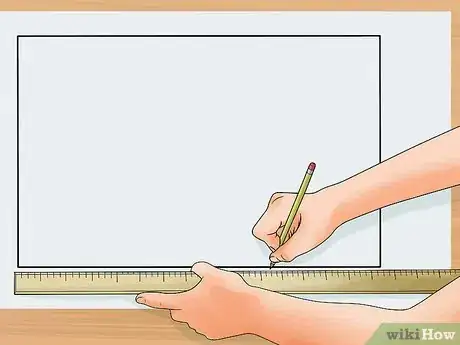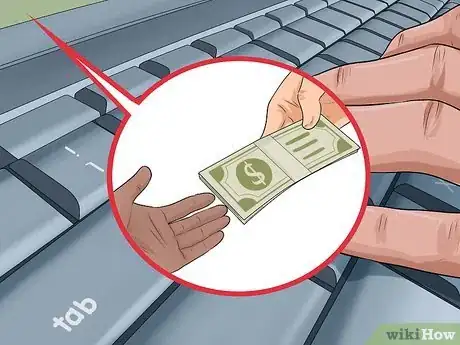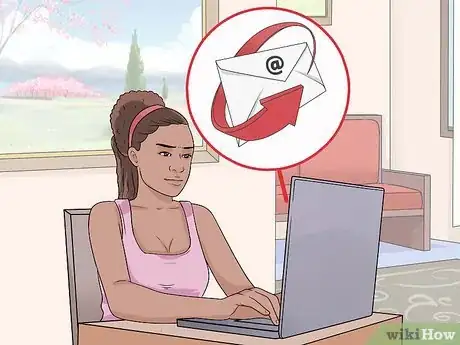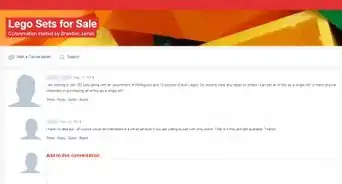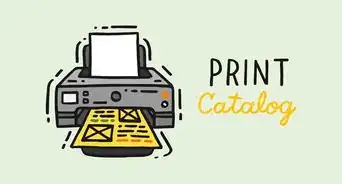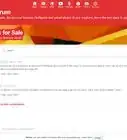This article was co-authored by Brian Honigman. Brian Honigman is a Marketing Consultant and the Owner of Honigman Media LLC. With over a decade of marketing experience, he specializes in consulting with organizations about digital marketing, social media, and content marketing. Brian holds BA in Political Science and Journalism from The University of Pittsburgh. In addition to being a Consultant, Brian is an Adjunct Marketing Professor at New York University and Francisco Marroquín University. His work providing consulting services, training workshops, and coaching programs led to him being named “Digital Marketing Expert” by Entrepreneur and a “Top Social Media Pro” by Social Media Examiner. Brian’s notable clients include The United Nations Development Programme, Thomson Reuters, NATO, and People Magazine.
There are 9 references cited in this article, which can be found at the bottom of the page.
wikiHow marks an article as reader-approved once it receives enough positive feedback. This article received 14 testimonials and 100% of readers who voted found it helpful, earning it our reader-approved status.
This article has been viewed 295,983 times.
Launching a new product attracts consumers as well as corporate buyers, and informs the public about your product and business. Your product launch needs to be exciting and informative, but it is not always easy to accomplish these goals. As you get ready to launch your new product, there are several things that you can do to make sure that the launch is a success.
Steps
Planning for Success
-
1Conduct research on your competitor's products. Research products similar to the one you're planning to launch, especially those already well-known by consumers. Check out trade journals, competitor websites and brochures, and any other source of information on the products that you can find. Use this information to orient your launch towards the ways in which your product is different and better than the competition. [1]
-
2Perform a SWOT analysis. A SWOT analysis of your product can help you take a closer look at your product and compare your product to a similar product made by your competition. SWOT stands for strengths, weaknesses, opportunities, and threats. You can perform a SWOT on your own or in a group setting as well. A SWOT can help you to:
- figure out how best to market your product before its launch
- identify problems that you may need to address
- find ways to make the launch more successful
- address any problems before the launch[2]
Advertisement -
3Identify your target customer. You can do this by deciding what demographic will be most willing to purchase your product. Try to pinpoint the age, gender, and socio-economic background of your target customer.[3] This customer is the type of person that you should focus on when preparing to launch a new product.[4]
- Try giving him or her a name to personalize the process, and attempt to put yourself in his or her shoes. For example, you might identify your target customer as a 24 year old male from an upper-middle class family and call him Ayden.
- Try to determine the needs, behaviors, and even mindset of your target customer.[5] For example, perhaps Ayden needs headphones that will block outside noise so that he can listen to music as he rides the subway to work each day.
- Try to identify your customer's motivations, too.[6]
- Think about where the customer hangs out both online and offline, so you can market in the right avenues and grab their attention.[7]
-
4Design attractive product packaging. With your target customer in mind, create packaging that is bold, the right color scheme, pleasing to the eye, and even memorable. Packaging is the first step to getting your new product noticed.
- Consider including cusp shapes in your packaging. Cusp shapes are pointy and sharp, so they make some people feel like they are in danger. Including these shapes on your packaging are an easy way to get customers to take a second look.[8]
- Stick to something simple. Busy designs may overwhelm customers, so having a simple looking package may also be a good way to go.[9]
-
5Create the perfect product slogan. Choose a phrase or motto that is catchy, captures the essence of your product, and will speak to your target customer. The slogan should consist of simple language and could rhyme or contain words beginning with the same letter to make it catchier.
- Popular slogans include McDonald's "I'm lovin' it," Nike's "Just do it," and Walmart's "Save Money. Live Better."
- One study found that the three main factors in creating a great slogan are clarity, creativity, and familiarity.[10] Try to keep these in mind as you create your slogan.
- Consider hiring a writer or communications specialist to come up with this slogan. It may save you time to employ someone with a remarkable command of language.
Marketing Before the Launch
-
1Get people to test your product. One great way to get some good publicity going and to find out what people like most about your product is to allow people to test it out. You can use their feedback to help you market the product, such as by gaining customer testimonials.[11]
- Consider the best way to allow people to test your product. For example, you might be able to show people the high quality of your headphones by setting up a kiosk in a mall and inviting passersby to try them out.
-
2Write up a product sheet. This document should recount the product’s specific details and features. It should explain the specifics of a product to consumers while still making it attractive and exciting. In other words, a good product sheet balances important technical information that is legally necessary with marketing allure.
- Product sheets should Include information regarding general usage, product components or ingredients, and any relevant safety warnings. For example, the product sheet might explain how to get the best quality sound out of the headphones and warn about the dangers associated with listening to music too loudly.
- Within reason, they can also be seen as extensions of a marketing campaign, and use words and images that will entice customers. For example, a headphone product sheet might use words like “crisp,” “powerful,” and “thumping” to describe the sound quality in a way that customers may find enticing.
-
3Launch a product website. Ensure that this website provides customer testimonials, appealing images of your new product, as well as detailed information for consumers. Include product comparisons, ordering information, and promotional offers to further entice buyers.
- Make sure that your website guides visitors to do what you want them to do. For example, do you want them to order your product? Do you want them to download your app? Make sure that there are multiple ways for your website visitors to do what you want them to do.[12]
- Consider hiring a skilled website designer. A website designer can make sure that your website is easy to navigate and professional looking.
-
4Purchase advertising. Multichannel marketing is often successful, so place ads in many types of media simultaneously to announce the pending launch of your product and reach the maximum number of target customers.[13] Website ads are increasingly important. But also buy ad space in local newspapers or trade publications to expand awareness and build hype. Consider radio ads and, if your budget permits, television spots.
- The more forms of advertising you can obtain the better.
- Consider hiring a public relations or advertising firm to coordinate these advertising efforts for you.
-
5Make your product available to cultural influencers. Consider doing so weeks before the actual launch. Cultural influencers can include community leaders, bloggers, local celebrities, and sports figures. Give free samples and encourage these people to use your product. Then arrange for them to be interviewed about your product, or to write review articles or posts.[14]
- Anything positive that these people say (or write) can be used to hype up your product launch.
- To contact someone influential who you would like to try out your product, try sending an email to the person. In the email, make sure that you introduce yourself, explain your product, and ask if the person would be willing to test it out and tell you what he or she thinks.
Launching the Product
-
1Orchestrate a rolling launch. A rolling launch should begin six to eight weeks before the final product unveiling. Make sure there are plenty of strategic “leaks” regarding your product as the unveiling date draws closer. You can’t control when journalists or bloggers will cover your product, so give them plenty of time.[15]
- "Leaked” photos or mysterious tweets regarding your product create an atmosphere of intrigue that builds interest.
- Planting “news” stories about consumers are enthusiastically responding to free samples or trials can create momentum.
-
2Hold an official launch. Invite reporters, bloggers, consumers, celebrities, and members of industries related to your product. Give out free samples and try to make the event memorable with respect to catering, lighting, and even musical performances. Doing these things will give people more reasons to attend the event and may also generate more interest in your new product.[16]
-
3Try using an unconventional or intriguing launch venue. Given the number of products on the market these days it can be hard to generate a buzz, and you may have to move beyond trade shows and convention halls to get attention.[17] Instead of a convention center or showroom environment (and depending on the nature of your product), consider a less traditional location such as:
- a bar or restaurant at the top of a skyscraper
- an avant-garde art gallery
- an infamous historical site
- a local street festival or fair
- online during a "cyber launch"
- during a flash mob[18]
Expert Q&A
-
QuestionWhat should you consider before launching a new product?
 Lauren Chan Lee, MBALauren Chan Lee is Senior Director of Product Management at Care.com, the largest online marketplace for finding and managing family care. She has worked in product management for over 10 years across a variety of specialties and areas. She received her MBA from Northwestern University in 2009.
Lauren Chan Lee, MBALauren Chan Lee is Senior Director of Product Management at Care.com, the largest online marketplace for finding and managing family care. She has worked in product management for over 10 years across a variety of specialties and areas. She received her MBA from Northwestern University in 2009.
Product Leader, Care.com Be prepared for any issues that come up after your launch. Once your product is out in the wild, people may encounter problems with it. There needs to be a way for them to contact support, whether that's via chat, email, phone, or whatever channels you support. Also, make sure the team at the front line gets the training they need to be really well-prepared to answer questions and help your customers.
Be prepared for any issues that come up after your launch. Once your product is out in the wild, people may encounter problems with it. There needs to be a way for them to contact support, whether that's via chat, email, phone, or whatever channels you support. Also, make sure the team at the front line gets the training they need to be really well-prepared to answer questions and help your customers. -
QuestionHow do you launch a new feature?
 Lauren Chan Lee, MBALauren Chan Lee is Senior Director of Product Management at Care.com, the largest online marketplace for finding and managing family care. She has worked in product management for over 10 years across a variety of specialties and areas. She received her MBA from Northwestern University in 2009.
Lauren Chan Lee, MBALauren Chan Lee is Senior Director of Product Management at Care.com, the largest online marketplace for finding and managing family care. She has worked in product management for over 10 years across a variety of specialties and areas. She received her MBA from Northwestern University in 2009.
Product Leader, Care.com You might hold a webinar, add a "What's New" feature in your app, or have a banner. That helps the customer engage with the new features better than if they just read about it in an email.
You might hold a webinar, add a "What's New" feature in your app, or have a banner. That helps the customer engage with the new features better than if they just read about it in an email. -
QuestionHow should I present my work when launching a new product?
 Community AnswerWhen creating your presentation, make sure to keep it short but memorable so that people pay attention and remember instead of getting distracted. You also want to make sure you have something to catch your audience's attention. In terms of presenting the presentation, be sure to bring anything you need that morning. Get a good night's sleep beforehand and get an early start the next day.
Community AnswerWhen creating your presentation, make sure to keep it short but memorable so that people pay attention and remember instead of getting distracted. You also want to make sure you have something to catch your audience's attention. In terms of presenting the presentation, be sure to bring anything you need that morning. Get a good night's sleep beforehand and get an early start the next day.
References
- ↑ http://www.entrepreneur.com/article/76364
- ↑ http://ctb.ku.edu/en/table-of-contents/assessment/assessing-community-needs-and-resources/swot-analysis/main
- ↑ http://www.entrepreneur.com/article/76364
- ↑ Brian Honigman. Marketing Consultant. Expert Interview. 16 April 2021.
- ↑ Brian Honigman. Marketing Consultant. Expert Interview. 16 April 2021.
- ↑ Brian Honigman. Marketing Consultant. Expert Interview. 16 April 2021.
- ↑ Brian Honigman. Marketing Consultant. Expert Interview. 16 April 2021.
- ↑ http://www.forbes.com/sites/onmarketing/2014/07/23/the-five-things-product-packaging-must-do/
- ↑ http://www.forbes.com/sites/onmarketing/2014/07/23/the-five-things-product-packaging-must-do/
- ↑ http://www.sciencedirect.com/science/article/pii/S0148296314001775
- ↑ http://www.bloomberg.com/bw/articles/2014-10-10/marketing-six-tips-for-launching-new-products
- ↑ http://www.forbes.com/sites/ilyapozin/2012/02/27/5-steps-to-a-great-website/
- ↑ http://www.entrepreneur.com/article/76364
- ↑ http://www.fastcompany.com/3004920/10-steps-successfully-launching-new-product-or-service
- ↑ http://www.fastcompany.com/3004920/10-steps-successfully-launching-new-product-or-service
- ↑ http://www.inc.com/guides/2010/06/planning-a-product-launch-event.html
- ↑ http://www.inc.com/guides/2010/06/planning-a-product-launch-event.html
- ↑ http://www.inc.com/guides/2010/06/planning-a-product-launch-event.html
About This Article
To launch a new product, start by getting people to test your product, so you can find out what customers like and how to make it even better. Then, set up a website, and use it to provide detailed information about your product, along with appealing images and positive testimonials. After that, consider providing free samples to bloggers and asking them to write good reviews for your product. Finally, begin leaking photos or tweets to build interest and excitement about 6 to 8 weeks ahead of your official launch event. For more tips, like how to write up a product sheet and purchase advertising, keep reading!




